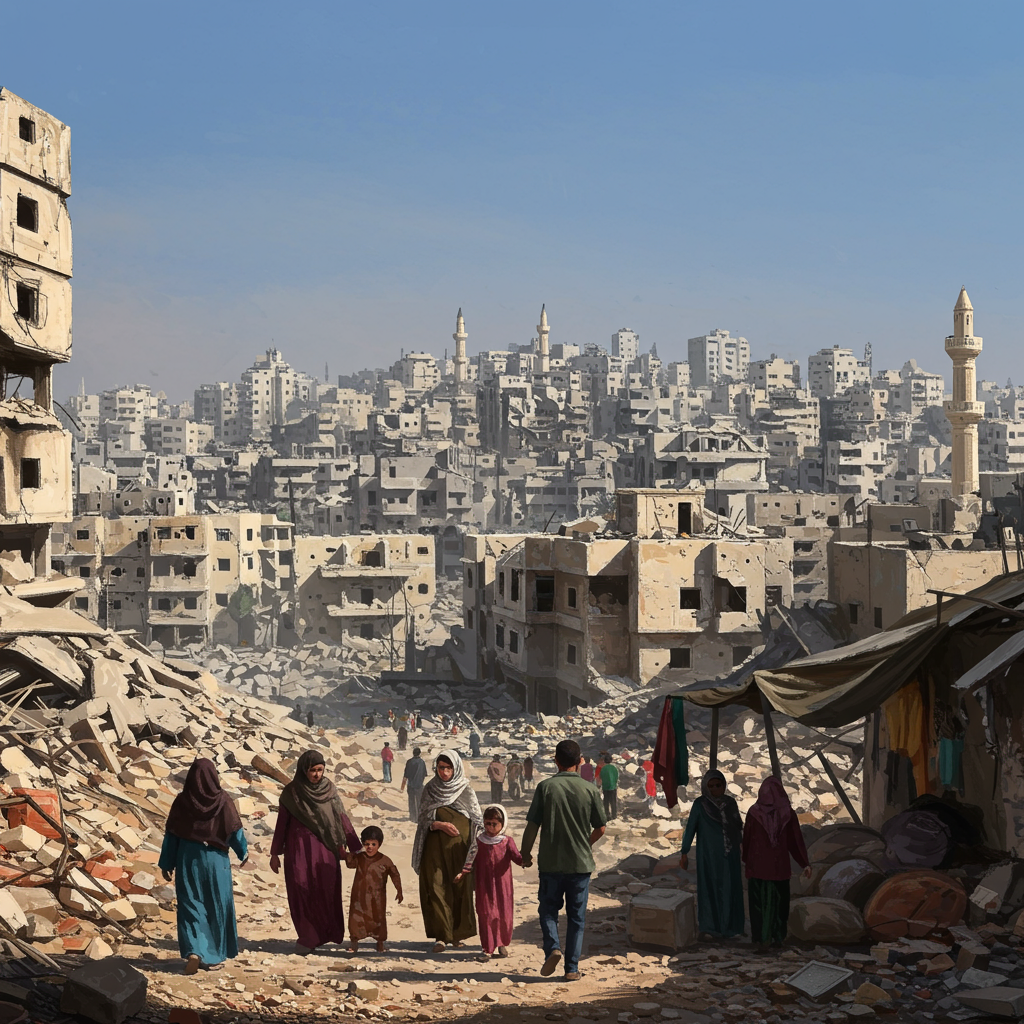While global headlines have recently focused on broader regional tensions, particularly following Israel’s unprecedented attack on Iran, the devastating conflict in the Gaza Strip continues unabated. In just one recent week, at least 265 Palestinians were killed amidst escalating violence and a deepening humanitarian catastrophe.
After 20 months of conflict, much of Gaza has been reduced to rubble. The entire population of over 2.2 million has been displaced, and the total Palestinian death toll since October 2023 has tragically surpassed 55,700, according to Palestinian officials. Critics voice concern that the world’s attention has been significantly diverted from the scale of destruction and suffering in Gaza by the focus on the Israel-Iran fallout.
This past week highlighted the relentless human cost of the war, with significant casualties reported daily:
Monday (16 June): At least 20 people were reported killed by Israeli forces near an aid distribution site in Rafah in southern Gaza, according to Gaza’s civil defence agency. Spokesman Mahmud Bassal stated that troops opened fire on people waiting for food, resulting in over 200 wounded alongside the fatalities. Doctors at Nasser Hospital in nearby Khan Younis emphasized the dire hunger faced by residents, with one head of paediatrics noting people hadn’t received food in nearly four months.
Tuesday: At least 80 Palestinians were killed and hundreds wounded in two separate incidents at aid distribution centres in southern Gaza. Eyewitnesses described coming under artillery shelling. The Palestinian Ministry of Health reported approximately 30 deaths in the al-Alam area of Rafah and nearly 50 in the al-Tahlia area of Khan Younis.
Wednesday: At least 33 people died from Israeli fire across the Strip. This included 11 fatalities and over 100 injuries when forces reportedly opened fire and shelled thousands gathered to queue for food in central Gaza.
Thursday: Israeli forces killed at least 72 people. Tragically, 21 of these were individuals gathered near aid distribution sites. Six died waiting for aid in southern Gaza, while 15 others were killed near the Israeli-controlled Netzarim corridor, which bisects the territory.
- Friday: At least 60 Palestinians were killed. Of these, 31 were specifically identified as aid seekers. Five people died waiting for aid in southern Gaza, and 26 near the Netzarim corridor, where thousands gather daily hoping for food rations.
- www.middleeasteye.net
- www.middleeasteye.net
- www.middleeasteye.net
- www.middleeasteye.net
- www.middleeasteye.net
Targeting Aid Seekers: A Disturbing Trend
The high number of casualties among Palestinians seeking aid has become a recurring and deeply alarming issue. Reports and eyewitness accounts indicate that individuals gathered at relief distribution points, including sites associated with a US-backed initiative, have come under direct fire or shelling from Israeli forces. Rescue crews have reportedly faced obstacles, including heavy shelling, preventing them from reaching the wounded or retrieving bodies in certain areas.
This pattern has drawn strong international condemnation. Philippe Lazzarini, head of the UN agency for Palestinian refugees (UNRWA), has described the targeting of starving people trying to collect food as “lethal” and a potential “war crime,” stating Palestinian lives have been “so devalued.” Sweden’s foreign minister echoed concerns, calling starvation as a method of war a “war crime” and suggesting “strong indications” Israel may not be adhering to international humanitarian law regarding aid access and protection.
Deepening Humanitarian Crisis and Infrastructure Breakdown
Beyond the direct casualties, the humanitarian situation in Gaza remains critical. Hospitals face overwhelming challenges, warning of looming health disasters, particularly threatening the lives of infants. Critical shortages of essential supplies, including baby formula, are causing malnutrition and other health crises among the youngest population. Medical directors have issued urgent appeals for international intervention to ensure vital formulas are allowed entry, while rights groups accuse the Israeli government of using starvation as a weapon of war.
Compounding the crisis, Gaza has suffered severe infrastructure damage. A complete internet and landline blackout recently occurred following the reported bombing of the last main fibre-optic route by the Israeli military, isolating the population further and impeding humanitarian and communication efforts. With severe restrictions on essential supplies like fuel, desperate residents have even resorted to improvising fuel from plastic waste to power transport and generators.
While conflict persists, affecting all areas of life including the safety of journalists (with over 220 killed since October), the week’s grim tally underscores the immense human cost of the ongoing war in Gaza, a crisis that continues to demand urgent global attention and action.




